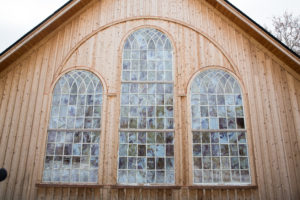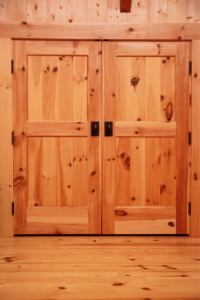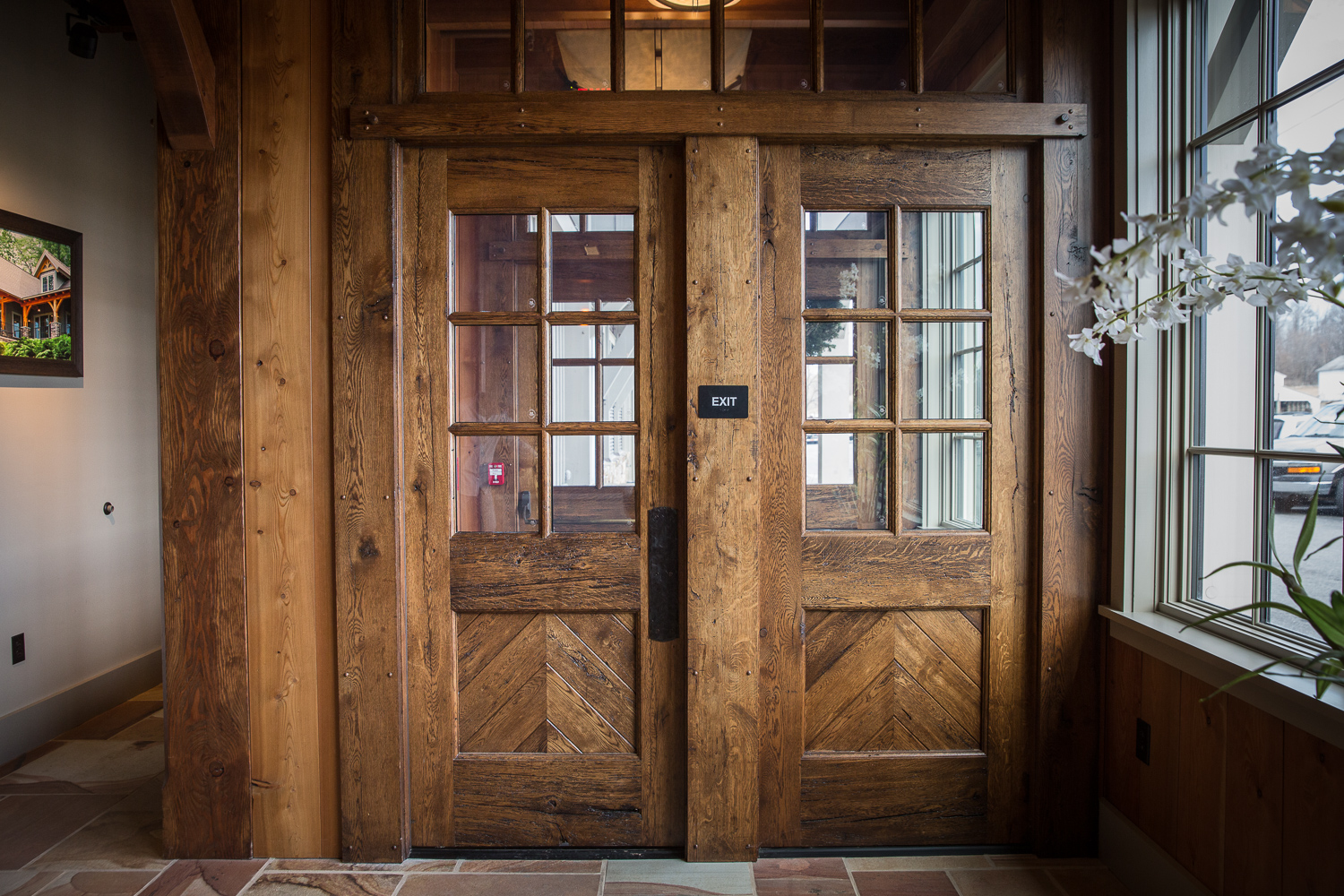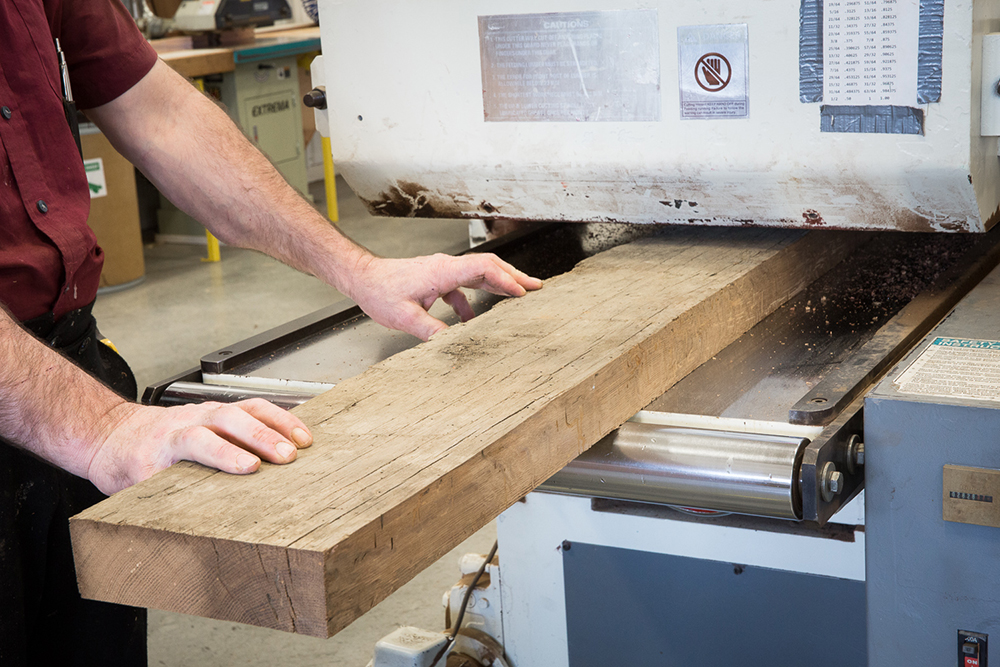
Aug 24, 2020 | Historic Restoration
We all might admire the modern building going up in the office park next door, or the new development of houses in our neighborhoods, but have you considered the benefits of restoring historic buildings and why this is such an important service? There are four major reasons why you (as a community or individual) should consider historic restoration or preservation of your home or building instead of a new structure.
1. Culture
Restoring historic buildings connect us to the past. They are physical reminders of what came before us and help to create a sense of culture in a neighborhood. Historical buildings such as libraries, cathedrals, and estates give us a way to study the past and make sense of the communities that came before us. Old buildings have unique characteristics that can be difficult to replicate in new commercial builds. You may be able to make a new structure look similar to the old, but it won’t feel the same unless the same building techniques and materials are used.
2. Education
Preserving historic homes and buildings act as learning tools not only for architects and builders, but students and communities as well! Think of all the tangible education that would be lost if historic buildings were demolished instead of preserved or restored. Visiting old structures is a way for architects and builders to study past techniques and design, and students and others can learn about what came before them and what might have influenced the present day. It is imperative we restore historic structures and use them as educational tools.
3. Economy
Not only does historic restoration benefit culture and education, but it also helps to boost the economy. Think about all the tourism dollars that could aid a community by keeping these structures alive, well, and as close to the way they were in their heyday. Preserving or restoring old structures is good for business. It benefits travel and tourism, of course, but also helps to create jobs. There are many specialists who pride themselves in the knowledge needed for correctly restoring, preserving, and maintaining old buildings.
4. Environment
Any form of restoration is environmentally friendly compared to a new build. You are not wasting materials, or creating a need for new ones. Also, rehabilitating existing structures can make them more eco-friendly or durable to lessen maintenance costs. Efforts to restore buildings can also help to limit other environmental factors, such as suburban sprawl, traffic, and environmental degradation. Your first reaction to wanting to be eco-friendly may be to invest in many new tools and materials — but the answer may already exist! You can restore a structure that has value, history, and meaning without the need for demolition or investing in tons of new materials. With historic restoration or preservation, you can return a structure to its original look while also making it more energy efficient and increasing its value.

There are four different methods of preserving a historic building.
1. Rehabilitation
Adding to or otherwise altering a property to keep up with its current use but still respect its historic character.
2. Reconstruction
If pieces are missing, these can be re-created to match what existed before they were lost. This is usually done with the aid of old photographs. Sometimes aspects are remolded but will keep former significance.
3. Preservation
Preserving a building maintains how it currently exists in the present day, keeping any historical elements and pieces in place.
4. Restoration
The property is restored to how it existed in a specific moment in history. Usually specific building materials are needed to ensure historical accuracy and to meet codes.
Keeping a connection to the past by choosing a historical restoration service is a wonderful way to give back to your community and environment. Our craftsmen make sure to preserve or restore buildings using all the proper materials and guidelines. We’ve worked with many older properties, including buildings on the National Register of Historic Places, replicating and replacing pieces to ensure historical accuracy. We take the time and care to ensure your building will look not only like the original, but even better!
Call or click here to book a project today.

Jun 8, 2020 | All About Materials
You have the perfect vision for your wood project — a new front door to welcome you home, a cupola to top off your party barn, or a gate to create the perfect picture entryway. Enthusiastically, you’ve had plans drawn up, but what is the next step? You’ll probably ask yourself, “What type of wood should I use for my project?”
Before you choose, let’s take a step back and learn a little bit more about the different types of wood available. Although we work with many different wood species here at Vintage Millwork and Restoration, we’ll focus on a few of our most popular: sapele mahogany, white oak, western red cedar, and knotty pine.
Hardwood versus Softwood
Wood is broken down into two main categories, hardwood and softwood. The main difference? According to Penn State Extension, hardwood trees lose their leaves annually whereas softwood trees retain their foliage year-round. We use both types of wood depending on the project.
Hardwood
Most of the hardwood we use grows in the eastern part of the United States and thrives in broad-leaved, temperate forests. It is commonly recognized by its distinguished annual rings, density, and gorgeous grain patterns. Hardwood takes time to grow and flourish to the size needed before harvesting and in the end, generally costs more. The sparsity of these wood species makes them even more desirable to use in projects.
Popular hardwood species are sapele mahogany, oak, maple, cherry, walnut, and teak. While there are a few ways to build with hardwood, we commonly use this wood for doors, stairs, and tack room accessory projects.
Two popular types of hardwood we mainly use in projects are sapele mahogany and white oak.
What Is Sapele Mahogany Wood?

Flat-sawn sapele (left) versus quartersawn (right).
The sapele mahogany is a large hardwood tree commonly found in Central Africa. Tall and wide, its trunk can exceed six feet in diameter! Because the sapele mahogany tends to have few to no branches below eighty feet, it yields lumber that is wide and long with a very straight grain, giving it a very attractive and distinctive look.
We recommend sapele mahogany for many projects not just for its looks but also for its superior stability. Sapele wood has a medium hardness, with a Janka rating of 1510 lbf (pounds of force). It is harder than many North American hardwoods, and it’s almost twice as hard as genuine mahogany! As the tree’s fibers grow, they twist around the trunk with the grain pattern moving in the same direction. This interlocking pattern prevents a lot of the movement often found across the grain in other wood species. These characteristics make sapele mahogany a very stable wood to work with.
Sapele mahogany is unique because even though it is classified as a hardwood, it has some of the same features as softwood and can be used for some of the same projects.
“We recommend quartersawn sapele mahogany for its better stability.” Amos Fisher, General Manager
Sapele Mahogany Projects
Interior Projects: Common interior projects that use sapele mahogany wood are cabinetry, doors, and flooring. (It is even used to make musical instruments!)
Exterior Projects: Common exterior projects that use sapele mahogany wood are decking, siding, and window framing.
What Is White Oak Wood?
White oak trees are commonly found throughout North America, and throughout history, it’s been used for nearly any project imaginable. The symmetrical grain of this hardwood is typically long and straight, allowing multiple logs to be harvested on one tree without any significant knotting. However, it can also have an irregular grain and tends to have a coarse and uneven texture with porous annual rings. White oak lumber works well for both exterior and interior projects, and it looks great either stained or painted.
In addition to “new” white oak lumber, we also use a fair amount of reclaimed white oak. This hardwood is highly resistant to cracking, water damage, and decay, so a lot of it has held up over the years. Reclaimed white oak wood has become highly sought after for home projects, and often comes from barns and other buildings in the Midwest and Eastern United States.
White Oak Projects
Interior Projects: Common interior projects using white oak wood are those that need to be durable and/or water-resistant, such as bathrooms, children’s rooms, or rec rooms. We often use reclaimed white oak for projects such as doors, farm tables, and tack room accessories.
Exterior Projects: Common exterior projects involving white oak wood are front doors, barn doors, and window frames.
Softwood
Softwood comes from conifer trees such as cedar, pine, and spruce, and despite its name, it is not necessarily always softer than hardwood. Softwood accounts for 80 percent of the world’s production of timber (Wiki) and is most commonly used in the construction industry. Softwood is appealing because it is plentiful and versatile, and it tends to be resistant to insects due to the lack of moisture under the trees’ bark.
Two popular types of softwood we use in projects are western red cedar and knotty pine.
What Is Western Red Cedar?
The western red cedar is a tree native to western North America that thrives in forests and on mountainsides. This shade-tolerant tree quickly reproduces, providing an abundant supply of this softwood that’s a perennially popular choice for projects.
Western red cedar comes in warm cinnamon colors, adding a beautiful visual element to your home without the need for colored stain. The grain is straight with little knots. Throughout America specifically, this wood species has been used for centuries, not only due to its distinctive hue but for its durability, resistance to weather decay, minimal maintenance, and long-lasting beauty. Western red cedar is a truly versatile softwood that looks good while standing up to the elements.
Western Red Cedar Wood Projects
Interior Projects: Common interior projects involving western red cedar include paneling, accent beams, and trim.
Exterior Projects: Common exterior projects involving western red cedar include posts, pergolas, siding, doors, and decking.
What Is Knotty Pine Wood?
Knotty pine is a softwood distinguishable by its prominent knots and gorgeous honey tones. These wood boards range from yellow to orange and even reddish, and they work particularly well for mid-century modern and rustic projects. Thanks to knotty pine wood’s warm colors and charming knots, this softwood is a popular choice for adding visual appeal.
Knotty pine wood comes from evergreen trees that typically grow anywhere from ten to 260 feet tall (wiki). Pines grow significantly faster than other species and therefore are the most commercially important tree species in the world. Knotty pine wood is medium in density but more durable than most other softwoods.

Knotty Pine Wood Projects
Interior Projects: Common interior projects that use knotty pine wood are interior doors, furniture, floors, cabinetry, drywall framing, paneling, and countertops.
Exterior Projects: Common exterior projects that use treated knotty pine wood are outdoor furniture, and roofing. We don’t recommend using knotty pine on any exterior doors.
One More Thing to Consider When Choosing the Type of Wood for Your Project: Stain
The finishing touch to your wood project may involve staining and/or finishing. Deep-penetrating wood stain enhances the color of your wood, while the finish provides protection against the elements. We work with only the highest quality stains and finishes for our doors and other millwork projects.
To allow the natural beauty of the wood to shine through, we typically use a flat finish. A variety of stain colors are available to complement your wood choice and color preference. Here are some of the most popular stain choices that we recommend:
- Medium Brown with Clear
- Puritans Pine
- Red
- White
- Clear
- Early American
- English Chestnut
Still undecided? We understand there are many variables in determining which wood species is best for your project, as well as which stain to choose. Our team of custom craftsmen at Vintage Millwork and Restoration will work with you every step of the way to ensure you have the best-finished product. Let’s get started!

Apr 25, 2018 | All About Materials, Custom Doors
Contractors and architects who are building some of the most beautiful homes and buildings of today are recognizing the value that reclaimed wood adds to their buildings in terms of style, durability, and the ability to impress their clients. To appreciate the benefits of using reclaimed wood for the interior and exterior doors of your architectural project, you need to consider both the history of the wood as well as its current usefulness and durability.
Reclaimed Wood: What Is It?
Reclaimed wood refers to processed lumber that is expertly sourced and recovered from another structure. In America’s early years, wood was the primary building material, chosen for its strength and relative abundance. As a result, buildings such as barns, cabins, warehouses, and churches are popular sources for reclaimed wood. Everything from siding to doors to heavy wood beams can be reused in today’s buildings. You can find reclaimed wood being used as accents, timber frame supports, furniture, building material, and as doors.
Reclaimed Wood Benefits for Builders
Using reclaimed wood gives discerning architects and builders an edge: you demonstrate your dedication to sourcing one-of-a-kind materials completely customized to your clients’ discriminating tastes. However, reclaimed wood also supports architects and contractors in goals of quality, authenticity, and sustainability.
Quality – A door’s primary function is to stand straight and protect the interior spaces. For that, you need a quality door made from durable materials. Most reclaimed wood is lumber that was harvested in the 18th, 19th or early 20th centuries, when trees were slow-growing, tall, straight, with a dense grain and a natural ability to resist mold and insects. (In contrast, many of the doors in mass markets are milled from fast-growing tree farms.)
Reclaimed wood has been exposed to weather and changes in humidity. This weathers the wood, making it more stable and easier to work with. Once the door is added, your new home or building’s heating system won’t cause the door to warp, cup, or twist.
Authenticity – Your clients are looking for a building that is completely individual to their style. When you start with reclaimed wood, you are guaranteed to give your clients doors unlike any other. Reclaimed wood doors are authentically rustic and each is 100% original. Some reclaimed wood comes with additional character, such as worm holes, nail holes, and knots. These natural and man-made accents add to the wood’s character, transforming the door into artwork. Inspire your clients with the value of transforming old, authentic materials into something new, useful, and beautiful.
Sustainability – Reclaimed wood is the environmentally responsible option for any homeowner or contractor concerned with their impact on nature. Not only are you avoiding chopping down new trees, you are also preventing viable wood from ending up in a landfill. Reclaimed wood also reduces the amount of emissions associated with logging, processing, and transporting new wood necessary for building a door.
Sourcing Reclaimed Wood for Architects and Builders
The process of efficiently sourcing and preparing reclaimed wood requires experience and expert millwork skills. Vintage Millwork and Restoration has a long history of creating custom doors from quality materials, as well as knowing how to find high quality reclaimed wood.
We provide the experience necessary to know which species of wood weather well in 100+ year old structures, and which do not. We help architects and builders source high-quality reclaimed lumber and avoid purchasing damaged pieces.
Once the wood comes to our in-house millwork shop, we carefully inspect each piece to ensure the quality of the reclaimed wood. Once quality is assured, we remove any nails or other metal pieces from the wood. We sterilize the wood, killing any insects and mold, through kiln drying. This process also removes any residual moisture from the wood before the next step, which is cutting the wood to your exact specifications.
Vintage Millwork and Restoration has a long history of creating custom doors from quality materials, including reclaimed wood. Our craftsmanship allows us to expertly manage weathered wood and create beautiful, custom doors with long-lasting durability. To get started on offering your clients the best in reclaimed wood door, contact us or call us at 717-687-0292.

Mar 13, 2018 | Custom Doors
There are a lot of options when it comes to choosing a custom door to a home, storefront, or garage. Purchasers can source doors from a variety of companies, checking against pricing, style capabilities, wood species, stains, and hardware. But, when researching custom door builders, it’s a bit harder to compare apples to apples. That’s because there are a lot of factors that can’t be communicated on a price sheet or door profile list.
Some factors can only be discovered through experience. Asking the right questions can help you narrow your search and ensure you select the right builder for your custom door project. Here are the top things builders, contractors, and architects should consider when selecting a building partner:
1. A Turnkey Process
Is the same team that selects your material, also drafting your design and milling your door? Having one team involved improves accountability and limits the occurrence of miscommunications regarding design specifications. With Vintage Homes & Millwork, you can be sure the design you approved is ultimately what you’ll see delivered to your home or build site.
If you buy a stock door from a big box store, you know exactly what you’re going to get. But adding customizations or changes to make the door fit your structure’s design can get tricky. Working with a builder that has in-house millwork capabilities can be a big benefit, providing you with turnkey services and complete customization. Look for a custom door builder that offers in-house trim work, grid options, detailing, finishing and paints, hardware installation, and more.
2. A Reputation for Quality and Durability
Look for a builder who has a proven reputation of building doors similar to what you need. Ask questions about how the wood is sourced and the process used to prepare the material prior to building. For example, when working with natural lumber, Vintage Homes & Millwork doors are designed with kiln dried, quarter-sawn wood and use engineered side stiles for durability and strength. We layer quarter-inch pieces of wood, strategically positioned with the grains running in different directions, to form the core of each door. When compared to traditional solid wood construction, our technique minimizes points of weakness, reduces warping, and provides better thermal insulation. If your project calls for reclaimed wood, it’s import to understand if the builder has the right experience in sourcing and preparing the wood before starting your project.
3. Appropriate Technology
While doors have been around for millennia, the tools it takes to make them have certainly changed. Vintage Millwork and Restoration uses some of the best of today’s technology, coupled with old-world craftsmanship and attention to detail, to create beautiful custom doors. For example, our Nylon Brush Machine is able to clean and remove raised fibers of reclaimed wood so the resulting door keeps the rugged, reclaimed wood look but with a clean feel. This same machine can also distress natural wood to give it a reclaimed wood appearance.
Bottom line, look for a custom door manufacturer that has earned a reputation as a “go-to” resource for architects and custom builders. Ask about communication, quality control, attention to detail and a good response rate. When you call Vintage Millwork and Restoration ask us about our people, custom craftsmanship, technology, and our proven record of delivering a professional experience and unmatched end product.







